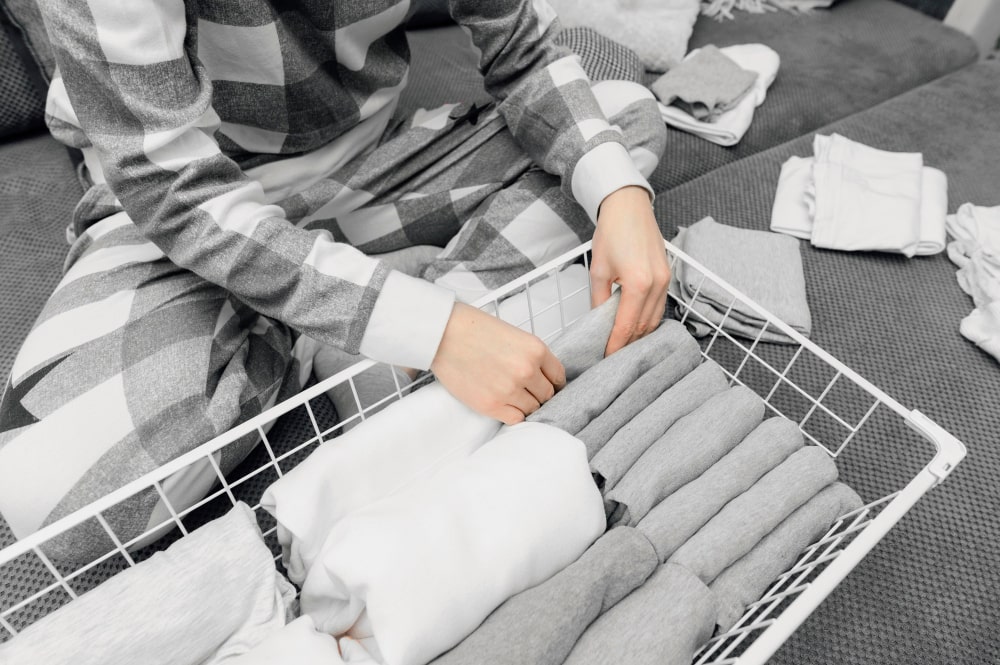The laundromat washing machine might be the workhorse of laundry day, but drying plays a crucial role in achieving that fresh, clean feeling. A Guide to Properly Drying Different Fabrics however, not all fabrics are created equal, and tossing everything into the laundromat washer and dryer on high heat can lead to disaster. Shrunken delicates, stiff jeans, and singed synthetics – laundry mishaps can turn a chore into a frustration.
Let’s get the knowledge to properly dry different fabrics, ensuring your clothes emerge from the dryer looking and feeling their best.
Understanding Fabric Care Labels
Every cloth we wear has a fabric care label, that is unnoticed for the majority. This small tag sewn into your garment holds the key to proper drying. Look for symbols that indicate the recommended drying method:
- 1. Tumble Dry High: Allows for high heat drying in a traditional clothes dryer.
- 2. Tumble Dry Medium: Suggests using medium heat settings for the dryer.
- 3. Tumble Dry Low: Recommends low heat settings for delicate fabrics.
- 4. Hang Dry: Instructs you to air dry the garment instead of using a dryer.
- 5. Do Not Tumble Dry: Strictly prohibits using a clothes dryer for the garment. Air drying is the only safe option.
How to Dry Different Fabrics
Cotton
Cotton is generally dryer-friendly. For most cotton items like t-shirts, jeans, and towels, tumble dry high is a safe option. However, for delicate cotton items like blouses or sweaters, opt for tumble dry low or even hang dry to prevent shrinkage and maintain shape.
Linen
Wool
Silk
Delicate Fabrics (Lace, Lingerie)
Additional Tips for Optimal Drying
While fabric type plays an important role, here are some additional tips from our cleanest laundromat for optimal drying:
- 1. Separate Clothes by Fabric Type: Don’t mix heavy towels with delicate blouses. Separate your laundry based on fabric type to ensure proper drying times and prevent heavier items from causing wrinkles in lighter fabrics.
- 2. Empty Lint Trap Regularly: A clogged lint trap reduces airflow and drying efficiency. Empty the lint trap before each drying cycle to ensure optimal performance and prevent potential fire hazards.
- 3. Tennis Balls for Faster Drying: (For dryer-safe fabrics only) Toss a few clean tennis balls into the dryer with your laundry. The tennis balls bounce around, promoting better airflow and potentially reducing drying time.
- 4. Wrinkle Release Feature: Many dryers offer a wrinkle release feature, which tumbles clothes periodically after the drying cycle is complete. This helps prevent wrinkles from setting in, especially if you’re unable to remove clothes from the dryer immediately.
- 5. Air Fluffing: For bulky items like comforters or pillows, consider using the air fluff cycle on your dryer. This cycle uses cool air to fluff the item without the heat that might damage the fabric.






